Campanula seeds?
How/when do I collect and later plant the seeds from my campanula?
I want to try with the plant that was the subject of this post:
https://www.houzz.com/discussions/tall-stalk-with-flowers-and-thin-leaves-dsvw-vd~3956700
But even more so, I want to try with two white flowered plants (same as the one pictured in that thread except for flower color).
I have no idea how to tell when the seeds are mature nor even if they ever will be. One of the white flowered plants as it looks now (two weeks after it finished flowering):
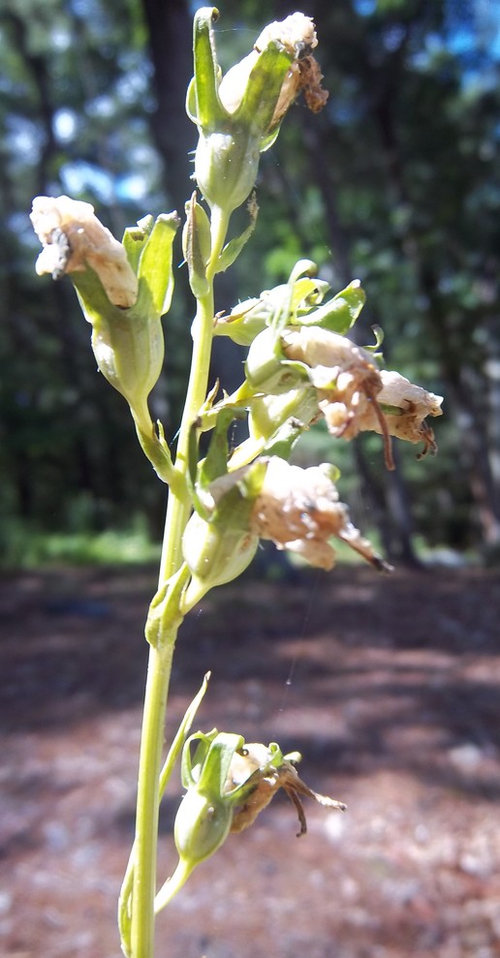
Comments (26)
floral_uk z.8/9 SW UK
7 years agoPatience. The pods will swell, dry and begin to open. But it can take weeks.
docmom_gw
7 years agoIf you want to insure that you capture the seeds, you could wrap the seed pods in knee high nylons or tulle wedding bags while they mature.
Martha
Related Discussions
Wanted: Campanula Persicifolia -blue color
Q
Comments (0)Hello Looking for Campanula persicifolia seeds- blue cup flowers. I have fresh Cupani Sweetpeas or bunny tail seeds for trade....See MoreWanted: Tall campanula, other seeds
Q
Comments (5)I have Barlow columbine but didn't see anything on your list that I'm looking for. You're welcome to the columbine seeds in exchange for postage. Let me know if interested....See MoreCampanula pyramidalis
Q
Comments (2)It's also know as Chimney Bellflower. Cottage Gardener in Ontario has them listed. Here is a link that might be useful: Cottage Gardener...See MoreWANTED: Campanula primulifolia seeds
Q
Comments (3)Great, I lost my one and only plant to a very bad winter. I had bought seed for something else and primulifolia is what grew, it turned out to be nicer then the one I thought I was growing, I had to do some searching to find out which one it was, it was a new one on me. I should have collected seed but you know how that goes. I think I still have your email addy so will get in touch. Hopefully there's something I can send you in exchange. Annette...See MoreJohn Fine
Original Author7 years agoI assume you don't mean wrap individual seed pods, but wrap the entire top of the plant for each of three plants (that I'm trying to seed from) around the 7 to 11 seed pods per plant.
In contradiction to the descriptions I saw online, the low leaves withered off during flowering from all the plants that flowered. So both the plants with developing seed pods and the plants that are now starting a second round of flowering (because I cut off the parts that would develop to seeds) lack all lower leaves and have only the few leaves interspersed with the seed pods or the new flower buds.
So any reduction of sun to the few remaining leaves seems risky. I don't think I could wrap individual seed pods and I don't think I should wrap the whole top of the plant.
xiangirl zone 4/5 Nebraska
7 years agoYou could wrap a couple individually to ensure you get SOME seed. They are tiny seeds so you should gather many in each seed pod, right?
John Fine
Original Author7 years agolast modified: 7 years agoAs the pods dry I see a tiny hole developed on each side of each dried pod. That looks like it would release seeds slowly into a strong wind and otherwise hold them. It looks like it would give me plenty of time to harvest the pods with minimal seed losses. I harvested the driest looking pod from one of the white flowered plants plus the driest looking from the strongest blue flowered plant.
I plan to try a few different planting methods, since I'm generally incompetent at this and doing it right tends not to work for me. There is one area that I earlier weeded and then transplanted a few Campanula into, then stopped what had been a rapid pace of finding them, so I left significant bare soil, then 1/3 of what I transplanted died. Likely, I'll transplant into that area again next spring, but meanwhile I wanted to try closer to the natural version of propagating Campanula (since they seem to self seed so well from what the wind blows out of those tiny holes in the pods). So I loosened that bare soil and spread all the seeds from that first white flower pod. I should know next spring whether those are sprouting before I need to decide whether to transplant to there.
Later I'll collect both types to store over the winter and try other methods.
John Fine
Original Author7 years agoNow that I have lots of (very tiny) seeds. How should they be stored prior to planting? In nature, they are obviously planted now. Online it says plant in the spring. Do they need to be chilled in between? Or is it just a matter of time? Or in nature, how do they know not to sprout now? Or are they supposed to sprout now to flower June 2017 instead of planted in spring 2017 to flower in 2018?
I will probably try a few different approaches. But if any of the ideas are 100% wrong, please warn me not to waste the time.
xiangirl zone 4/5 Nebraska
7 years agoCampanula Propagation – How To Plant Campanula Seed
Since most are biennial, propagating campanula plants, or bellflowers, is often required in order to enjoy their blooms each year. Although the plants may readily self-seed in some areas, many people simply choose to collect seeds for campanula propagation their selves. Of course, they can also be propagated through transplanting or division.
How to Plant Campanula Seed
Growing campanula from seed is easy; but if you’re planting seeds for campanula propagation, you’ll need to do so at least eight to ten weeks prior to spring. Since the seeds are so small, they barely need covering. Simply sprinkle them over a seed-starting tray filled with moist peat or potting mix (with about three seeds per cell) and cover them lightly. Then place the tray in a warm location (65-70 F./18-21 C.) with plenty of sun and keep it moist.
You can also scatter the seeds directly into the garden and gently rake some soil over them. Within about two to three weeks, campanula sprouts should appear.
http://www.gardeningknowhow.com/ornamental/flowers/campanula/campanula-propagation.htm
As I read on the internet, I didn't find anywhere that the seeds required stratification. I think these would be good to wintersow. I would think keeping the seeds stored in a dry, dark area would be sufficient. Be sure and post pictures of your babies! It will be fun to see the results!
Heidi
floral_uk z.8/9 SW UK
7 years agoYou could sow the seed straight away. As you say, that is what would happen in nature. Fresh seed stands the best chance of germination. However, you may not get plants immediately since some seed needs a period of winter cold to trigger growth. I'm not sure about Campanula persicifolia. If you look over on the Winter Sowing Forum and check the FAQ you'll find a very simple method of growing hardy plants from seed which requires no fancy equipment.
John Fine
Original Author7 years agoI'll post pictures of the tiny ones if I ever succeed. I wish I had found some pictures online of tiny Campanula persicifolia. I have no idea what they look like. I'm pretty sure I never saw (pulled) one from all the open areas where I have pulled everything. Most of the ones I found and successfully transplanted were growing under Lily of the Valley and sprout enough later than LOTV in the spring that I never saw them small. Most of the larger number that I found and transplanted less successfully were under ferns that in turn were under large shrubs (most much denser than the shrub the one in my first photo was under) so those stayed even better hidden than the ones under LOTV.
I still don't really believe the "tolerate shade" comment given so often about these as opposed to "require shade". I watered the transplants every day, and I'll continue every day to slightly wet the patch I seeded. Because maybe they tolerate sun when they have plenty of water. The one Campanula patch I left in place but provided sun by removing other plants and then only watered a little, died out. So even when well established, they don't seem to tolerate sun without regular watering.
To avoid complete failure, I might need to sow some of the seeds next spring where the LOTV is about to sprout, and then maybe transplant those Campanula next fall (when they are visible after the LOTV drops its leaves early) in hopes those transplants flower the next year. I hope these aren't just biennial (too much work). Online, it seems to say they flower for a few years (just not the first year). Maybe there are even a few first year Campanula still hidden under the thickest LOTV that I can transplant this fall (LOTV drops its leaves absurdly early, a few patches already have berries turning green to red and leaves turning green to brown).
John Fine
Original Author7 years agolast modified: 7 years agoThinks. But I meant what do the newly sprouted plants look like, to distinguish from all the (other) weeds that will pop up in moistened bare soil?
You have noticeably more seeds than I collected. I keep vacillating on the question of whether to go out and grab the last few seed pods on the plants I let go to seed (vs. letting the wind plant the seeds. I don't have quite the supply you have, but I think I have more seeds than I have patience to do anything constructive with.
The surviving transplanted blue blossomed ones that I cut dead flowers off the first time are now at the peak of a second round of flowers, but in each transplant location, that is fewer plants than the minimum to really look good. If these are perennial, I have a decent chance to improve it next year. If they are biennial, I doubt I can even duplicate this year (most of the apparently first year non flowering plants that I moved from under shrubs promptly died. I'd expect moving plants with buds about to open would be worst, but it seems to have been best).
EDIT: I just grabbed the last few seed pods from the second of the two white flowered plants and noticed a sudden change in both the white flowered plants: The stem dried up (which hadn't been visibly happening when the seed pods first dried), and a new cluster of leaves at ground level developed (I had been watering quickly and not really looking) an inch away from each of those two stems (the ground level leaves originally surrounding each stem vanished back when flowering started). So I assume this variety is longer lasting than 2 years and those leaves are building the underground reserves that will shoot a stem up next June.
John Fine
Original Author7 years agoFrom my second attempt at planting those, I may have created an indoor project for the winter. It all developed so much slower than I would have expected. The earlier attempt was dismal failure: carefully prepared ground, planted a few hundred seeds, covered with just a dusting of soil, slightly dampened every day for at least 6 weeks. Nothing sprouted. Then a major rain storm washed it all away. Next try, I first refrigerated a few hundred seeds for a week, then put two layers of paper towel on a big plastic tray, spread the seeds, with another layer of paper towel on top and kept it moist in indirect light for a few weeks, nothing. Then I kept it moist moved multiple time a day to keep getting direct sun. After a few weeks a bunch spouted and steadily more, but my initial guess that they could punch through wet paper towel was false. So after a few more weeks, I moved the whole three paper layers on top of an inch of soil on another tray and then removed the top paper layer as carefully as I could (but destroying many of the sprouts) and finally could see shape (rather than just green spot seen through wet paper) of each sprout. Each is an eighth inch long stem from the remains of the seed to a pair of very tiny round leaves. That all looks quite big to have popped out from a nearly microscopic seed. But still too small for me to really see without magnification. Quite a lot stood up nearly an eighth inch off the paper. Others vanished ( I think they are so tiny that if dried up would be microscopic). Then there have been weeks of moving the tray in at night and out when it is sunny and carefully watering. No sprout has visibly grown since it popped up. I hope the roots have invisibly found their way thought the pores in the paper to the soil. There certainly are no roots thick enough to see with just 10x magnification. Gradually, larger areas of the paper are empty as isolated sprouts vanished, while I think those clustered too close together for real growth are surviving better (but if they ever grow will be hard to separate). I hope the weeks of no change in the pair of tiny round leaves is natural while roots are growing. When it gets too cold, I guess I'm continuing this experiment entirely indoors. I still can't grasp how anything that tiny gets any sun at all in natural conditions.
Meanwhile third attempt: I ripped out LOTV and ground to 3 inches below grade (hardly long term effective but I'm trying to preserve some roots of nearby shrubs) then I piled on wet leaves and pine needles packed down hard 4 inches thick (to slow the LOTV recovery next spring) then sifted soil on top an inch thick. Before the ground freezes, I plan to spread Campanula seeds and sift on another 1/10 inch of soil. If any Campanula get big enough to identify and move next summer, I'll do so. I will also spread some Campanula seeds where I didn't remove LOTV, so if they grow under the LOTV next summer, I won't know until the LOTV dries up earlier than Campanula in the fall.
I looked at Winter sowing instructions. Maybe I'll try that too. But I think it is beyond my skill level.
Another meanwhile, the plant that flowered first, that I let go to seed (rather than force to rapidly repeat flower) flowered more times, then suddenly grew branch stems out of the main stem and those flowered into the middle of Oct (unlike all the other plants whose single tall stem dried up after it went to seed). Then while it was still flowering, some animal dug a tunnel opening next to it, ripped it and other plants around it out roots included and it was all gone. Rabbits and chipmunks have narrower tunnels and don't rip that much root with a plant. Groundhogs have wider tunnels. I haven't a clue what else it might be. One Campanula flowering mid Oct was odd. If others do that after well established, that would be neat. With weeding and watering, one of my two patches of transplants now has big tufts of leaves, much more than any untouched plants did. Hopefully those storing a lot of energy underground for flowering next summer.
User
7 years agolast modified: 7 years agoIf you grow even 1 campanula persicifolia, you will find plenty of others germinating around it. No special requirements. The only biennial campanulas are c.medium and c.pyramidalis and possibly the Ethiopean c.rigidipila). There are a few annuals (c.primulina I think, for one) but most are solidly perennial if somewhat shortlived. Persicifolia do not need stratifying - witness the many seedlings which appear in autumn around mature plants, although there will be a second wave of germination in spring..
John Fine
Original Author7 years agolast modified: 7 years agoThankyou, but I let these plant go to seed this summer in four different places, two of which had been well weeded before that and two were in thick weeds. Close inspection of all four areas shows zero Campanula seedlings now in autumn. The youngest self seeded Campanula I've ever seen have developed hidden under dense weeds all summer and become visible in late Oct when they stay green longer than the weeds hiding them. But those are very obviously not autumn seedlings and none are near the plants that went to seed. Part of my reason for manual planting is that I want to see what happens with the seeds from the two white flowered plants. As I try to build up two big clusters, I'd prefer each to be half white. The two white ones are from one plant that divided underground before I found it. All the others that self planted from wind blown seeds have blue flowers. I may end up just transplanting into two clusters the ones that show up scattered. But even someone as inept at this as I am should be able to grow some from seed.
Did you have an opinion on how often they split underground (send two main stalks up the next year)? Some of the plants I transplanted first pretty clearly had done so, and I divided such pairs a bit further apart during transplant and each created a separate single tuft of ground level leaves after the stalk dried up.
User
7 years agoCheck around your plants in spring - some always germinate in autumn but a late flowering will often yield seedlings the following spring. I have split c.persicifolia for an autumn division and also spring - they are not terribly fussy as long as they are well watered. Probably too late to be digging up and transplanting now but the small seedlings are very recognisable and the mature rosettes will pull apart with a bit of determined tugging. I will be astounded if no seedlings volunteer in your garden - these tiny seeds will travel some distance from the parent plant, often situating themselves in tiny cracks in the pavement or buildings.
John Fine
Original Author7 years agoThey are widely scattered on my property from wind blown seeds. I simply never saw anything outside that looked like the seedlings I now have growing (absurdly slowly) inside from my experiment of refrigerating seeds then sprouting in July. I guess there is no way to be sure the many volunteers around the property aren't from this year's seeds. But if they are, I'm doing something terrible wrong with all the ones I planted. I still think it is more likely 2015 seeds sprouted invisible in the shade under a variety of larger early sprouting perennials scattered around the property, and have become visible now as they remain green when almost everything else is gone due to the cold. Obviously, they must have been seedlings at some point. But nothing outside has ever looked like the seedling I have inside. The volunteers scattered around are in many places, but only in places that were in deep cover from early perennials in the spring 2016. There are a lot of more open places as well and no campanula volunteers in any such places. In one of the two open places I transplanted them to, they are doing extremely well now. So in the fall they certainly love open air and such sun as there is. But either they need shade in the spring or they need shade when tiny.
I'm more comfortable transplanting in the spring, so I haven't yet touched any of the plants recently revealed when whatever was hiding them died off. I guess I should mark them somehow in case they are hard to find in the spring, and try again to build up the clusters I want by transplanting them in the spring.
I also decided I'm too inept for winter sowing, so a couple days ago, I planted all the seeds I had gathered. About half went in an area I carefully cleared and leveled and after spreading the seeds I carefully dusted over them with about 1/10 inch of soil. So if they can sprout in an open place in the spring, these should. About half I spread into areas of lily of the valley. The best transplants I have gotten were ones that hid under LOTV for over a year (probably longer) before shooting up a flower stalk (which is when I transplanted).
User
7 years agoI will be amazed if seedlings do not appear in spring.
Nobody is too inept for winter sowing...any sowing in fact. Don't give up now - sow some nice fat sweet pea seeds...anytime from now until late April.
John Fine
Original Author7 years agoIn the super slowly developing indoor project (from my experiment of refrigerating seeds first) the strongest plants have added two slightly larger leaves to the original two nearly microscopic original leaves (all still way too small for me to focus even the macro mode of my camera on). In a room under 60F, next to partially shaded south facing windows, I expect they are a bit cold for new plants (though the full grown plants are still green outside in severe cold). In a giant tray, most sections lost all plants and are bare. The still large number of plants are in tight tiny clusters taking a small fraction of the tray area (no clue why those areas were better). I transplanted several plants individually to a different container to have some out of clusters, since if they succeed a single leaf would be bigger than a current multi plant cluster.
Each transplanted plant had a root which broke during transplant keeping 1 to 1.5 inch long root attached to the plant of what I can't tell the pre transplant length was. It will take a long time at this temperature to know whether transplanting killed them. In a tray with dirt less than an inch deep those roots ran horizontally nearer the top than the bottom. I transplanted with roots placed deeper, which might be totally wrong, It is impressive leaves that tiny grew roots that long and the roots are surprisingly strong for being so thin I can't see them without magnification during transplant (but they are thin enough "surprisingly strong" is still very very weak).
I'm still a bit stunned by how slowly these things grow. My big curiosity of whether seeds from the white flowers will grow plants with white flowers obviously won't be answered in 2017, despite the head start and first winter indoors. Even to flower in 2018 would take a giant acceleration.
John Fine
Original Author7 years agolast modified: 7 years agohttp://i1249.photobucket.com/albums/hh501/jsf67/IMG_0105_v1_zpsxclmz1ft.jpg
Someone suggested long ago in this thread that I post a seedling photo. But my camera couldn't take pictures close enough. I just got a new camera. This is the most developed of many seedling that I started in July and which sprouted in Aug. They have been in a south facing window in a cool room for most of the time since.
The whole plant is half an inch across (furthest tip of the third leaf to furthest tip of the fourth) and far less than half an inch tall. On this plant you can still see the two tiny original leaves that popped into existence almost instantly when the seed sprouted and remained unchanged as the only above ground portion of the plant for many weeks as roots developed. This plant has its fifth leaf started recently. Most of the other plants lost their first two leaves to dirt moving in even the gentlest watering I could manage and haven't yet started a fifth. So typical plant is just 3rd and 4th leaf and those all smaller than the half inch total span of this one.
I still have no clue why pampering them this way could be a lot worse than growth in the wild. If it isn't, then these grow so slowly in the first year that flowering seems very unlikely in the second year. (I'm still curious about flower color from the seeds of white flowers, which all my current indoor ones are). In the yard, I never saw anything that looks like these seedlings. I've only ever found larger plants and those only when clearing away larger weeds that were totally shading them. Large areas are bare enough now that if any had started outside in the fall, I think I would have found them. So I think the self planted seeds in July wait until spring to start and then are hidden under other plants all summer.
User
7 years agoRegarding speed of development: many plants, especially those with tiny seeds, seem to take forever to get going. They do not grow at a continual rate but like children or dogs, they grow in fits and starts. A minuscule seedling in March can grow to a storming 6 foot annual over a single season. Perennials can afford to concentrate on growing a good root system with no need to rush into flower (and seed)...and can take 3 years to reach flowering size...although campanulas will flower in their second season of growth, although some, like c.lactiflora, will flower in their first season, but reaching only 2 foot or so...while the following season, the plants will double in size, topping out at 4feet.
I can't get the scale right on your photo to say for certain what you have (am not terribly good at photo identifications anyway)
John Fine
Original Author7 years agoThat was a very magnified photo: Scale: Front to back from the nearest tip of the front cotyledon to the farthest tip of the back cotyledon is 1/8 of an inch. Side to side, from the tip of the first true leaf on the right to the tip of the second true leaf on the left is 1/2 inch.
In the full month since that photo was taken, the 3rd true leaf (opening tube in the center of that photo) grew to nearly as large as the 2nd, and a 4th leaf started as a tiny tube in the center, not as large yet as the 3rd leaf was in that photo. All these seedlings (the rest more slowly than this one) grow one leaf at a time, stopping when the tiny tube that will be the next leaf appears. This fastest one progressed by just under one leaf in 31 days.
None started naturally outdoors in the summer or fall when the seeds fell. So I expect many will start naturally outdoors in the spring. Maybe those will get a faster start than the indoor ones. But that is counter intuitive because the indoor ones got more sun and regular watering that the volunteers won't. So flowering the second year really doesn't seem possible.
As for ID, I have 100% certainty these all sprouted from seeds I collected from two white flowered campanula that you identified earlier as C. persicifolia.
floral_uk z.8/9 SW UK
7 years agoI am not 100% certain but the seedling in your image does not look like C persicifolia to me. Do you have pictures of a more developed example?
John Fine
Original Author7 years agolast modified: 7 years ago
Here is the same plant a month later. The full width of the photo still represents half an inch.
I am 100% sure about the pair of plants I got the seeds from and about the fact that these seedlings grew from those seeds. As for the identification of those plants as C persicifolia, I'd need to dig back through the threads here on that. I have several very similar plants with purple flowers and the two with white flowers. During transplant I split what I think was originally one plant into the two which produced white flowers.
What do you think would look different if this were C persicifolia?
Looking at volunteers outside, there are two very different appearances for whatever this plant is emerging from established roots. Unlike many other plants, the seedlings do not look like a miniature version of the same plant emerging from roots.
Under the big leaves of some of the transplants (done last June) are little plants that do look like miniature versions of the mature plants. I'm nearly certain those little plants are NOT seedlings. My two plausible guesses are:
1) When transplanting, I cut off but included some big chunks of root structure, and those managed to grow new separate rosettes. For various reasons, that seems more likely.
2) Some of the reproduction of this plant is by underground runner and these plants created offspring that way. (I'm sure this plant does that. I just don't think the transplanted ones did so this soon).
I did find one seedling outside under one of the transplants. It looks just like some of the weaker indoor seedlings. Remember this photo is the most developed of many indoor seedlings. I can't get a photo of the outdoor seedling. This is the limit of magnification for my camera and can only be achieved under very artificial conditions.
John Fine
Original Author7 years agolast modified: 7 years ago
This photo is Feb 1 including the parent plants. The two at the top of this photo are the ones the seeds came from. The longest leaves in this photo (top plant) are 4 inches from center of the rosette to tip of the leaf.
At the moment, those two plants look quite different to me than the others. But when they were all blooming, the bloom color was the only apparent difference.
I don't think you are saying the purple ones are C persicifolia and the white ones something else, but I wanted to allow for that possibility.
floral_uk z.8/9 SW UK
7 years agoC persicifolia spreads by running roots, so that is what you are seeing in the photo above. Each could be cut off and transplanted to increase your stock quickly. I do not think that the seedling is C persicifolia. An image can be seen here and it does not look like yours.
The id of your original plants is definitely correct whether blue or white. These are really very tough unfussy plants. They don't need a huge amount of attention or worry.
John Fine
Original Author7 years agolast modified: 7 years agoThe seedling photo there is too low resolution to see much. But such as I can see in that photo is consistent with my photos. I still don't get what difference you see other than high resolution photo vs low res. Those leaves are a bit rounder than my seedlings, but the volunteers vary widely in how round vs. elongated the leaves are. The first true leaf in that tiny photo exceeds the size of the cotyledons by more than mine do, which I am quite sure is an indication of the growing conditions: Better growing conditions make the first few leaves larger. But I'm not sure if that is sun, water or fertilizer.
Maybe lots of plants do the following things, which seem to match between that tiny photo and mine, so they don't prove match, but I don't think mismatch:
The first leaf lays down at right angles to the cotyledons. The second leaf lays down opposite the first and is much bigger than the first.
In that photo, I think I see the third leaf starting in a way that matches other observations (but this might be confirmation bias). Each leaf starts as a nearly vertical tube like shape, then opens to a leaf as it grows and lays down. The third leaf lays down above one of the cotyledons.
For reference, if you magnify that low res photo, what I think I'm seeing is:
First leaf pointing up and right.
Second leaf pointing down and left.
One cotyledon pointing down and right.
The other cotyledon and the start of the third leaf blurred together pointing up and left.
BTW, in my photo above, I believe you mostly can't see the very small plants started either from root fragments from transplant or runners. You see overlapping rosettes, most of which are plants I transplanted individually in June. I put them pretty close together because the rosettes were smaller in June. Then one surprising behavior was that each rosette wilted away during flowering and each plant grew a new rosette in the fall. But each of those new rosettes was offset about an inch from where I had put the original, and either Murphy's law or some weird behavior caused plants to pairwise migrate together, leaving more gaps and overlap than the way I transplanted them.
I expect this cluster will do a better job filling itself in than I could do giving it more attention. But I would like a larger total area there, so I'll try more transplants. The other place I tried to build a cluster did only a little worse while flowering, but much worse after. Only half the plants grew new rosettes in the fall and it wasn't practical to protect those from snow. The snow melted last night and none of that second batch still have leaves above ground. I think the volunteers usually lose their leaves under the snow and still recover in June, so I expect some of the second cluster will recover. But to have enough to look right will take a lot of transplants.
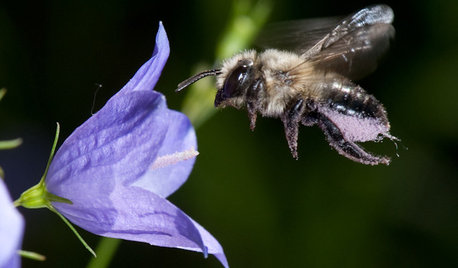

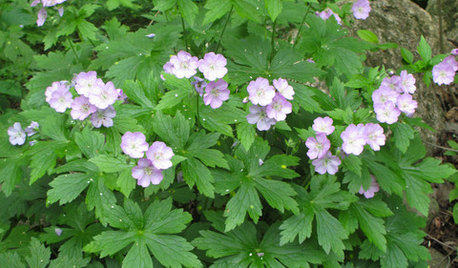
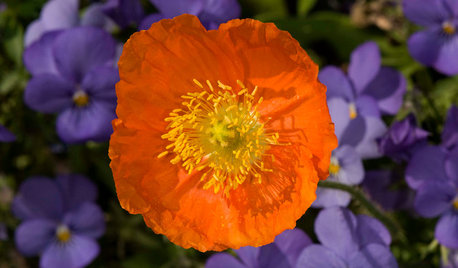
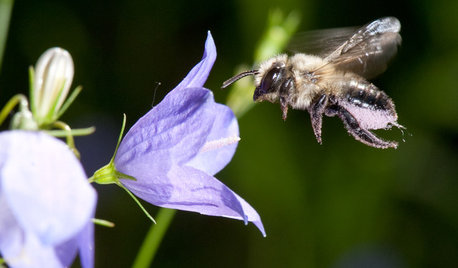
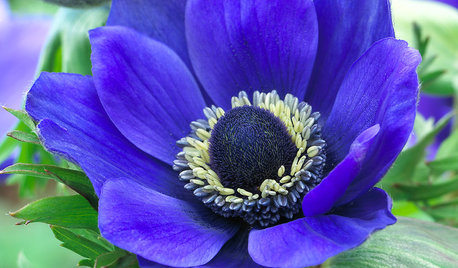

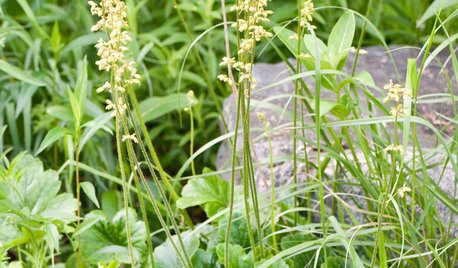



xiangirl zone 4/5 Nebraska